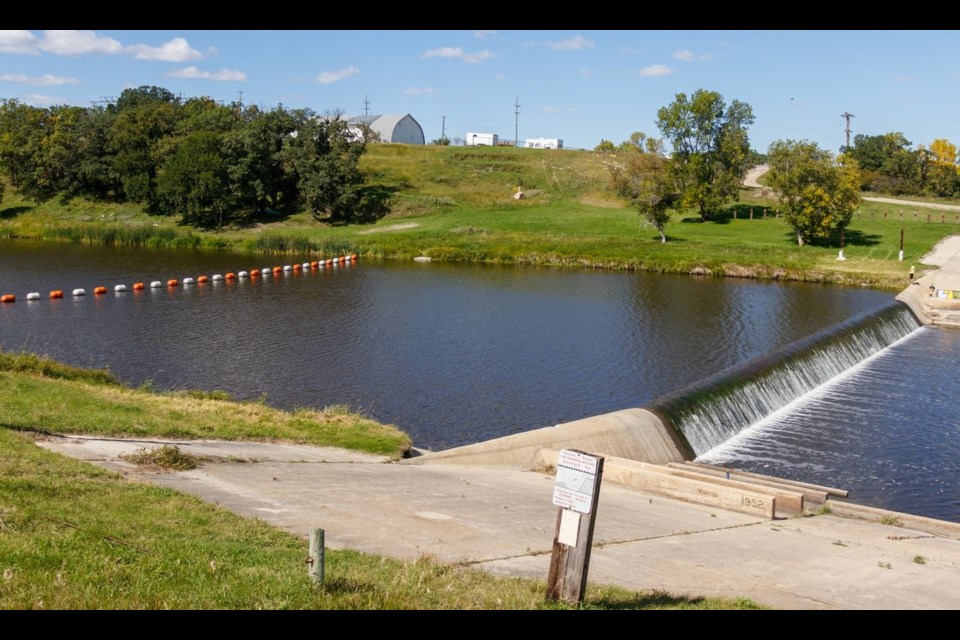International Souris River Study Board Canadian co-manager Bruce Davison said it has been a fulfilling experience sharing the draft final report, “Managing Water Supply and Flood Control in the Souris River Basin,” and sharing its recommendations with the public.
“It’s been a very rewarding experience for me to get a better understanding about what the issues are for the people who live in the watershed. It certainly opened my eyes, and I think I can say the same for some of the other board members, for some of the challenges that exist in the basin,” Davison said. “It’s a basin of extremes. Sometimes the river is almost completely dry under natural circumstances, and sometimes you get these enormous floods like we got in 2011.”
Final public comments for the study were sought from Aug. 16 to Sept. 7. Any comments submitted will be provided to the International Joint Commission (IJC) with the Board’s final report on Sept. 21. The IJC will use this information before presenting their final report on Souris River flooding to the Canadian and American Governments on Jan. 25.
“We’ve done a ton of work and we feel that it’s been good work,” Davison said. “We do recognize there is more work to be done and that’s how we framed up our recommendations.”
The nature of the basin can be challenging from a scientific and engineering perspective, he said, on top of accounting for the concerns of those who call the basin home.
The Souris River basin spans 61,900 square kilometres across Manitoba and Saskatchewan in Canada and North Dakota in the United States. A total population of about 157,000 people live in the basin, and the area boasts a diverse economy with a mix of agriculture, coal, energy production, service industries and tourism.
Canada and the United States have been working together through the IJC since 1940 to manage the transboundary waters of the Souris River.
The current operating plan has been in place since 1989 and extensively manages the area’s flood control and water supply.
An unprecedented flood in 2011 rocked the region, leading to a renewed focus on the agreement. At the time, members of the public and several government agencies requested flood protection measures undergo evaluations. There were also concerns related to the security of the water supply, water quality and environmental protection.
The International Souris River Study Board was a direct response from the governments of Canada and the United States to the 2011 flooding event. In September 2017, the IJC directed the study board to examine and report to the two governments regarding issues with the river. This included undertaking analysis and making recommendations regarding the operating plan included in the 1989 agreement and how flood control and water supply in the basin can be maximized.
The study explored around 60 possible changes for how reservoirs and dams are operated in the Souris River basin. These changes were then narrowed down to five potential actions requiring further analysis.
Based on its findings, the study board recommended revisions and clarification to the 1989 agreement take place, while concluding overall the plan had been performing well in the region. It recommended continuing to use the flow scenarios detailed in the agreement while updating the evaluative operational performance.
The study board also suggested strengthening the water supply and control benefits on the river. This included modifying the winter drawdown elevation targets to build greater flexibility into reservoir options, extending the winter drawdown date from Feb. 1 to March 1 to provide additional river flow, lowering the spring maximum flow limits to reduce flood peaks and agricultural flood risks, establishing a summer operating plan and shifting to a winter year cycle running from November to October when monitoring the river.
Increased monitoring of precipitation was also supported by the study board to ensure regular reports can identify gaps in reporting within the Souris River watershed and collect additional hydrologic data.
While the period for current public engagement may have come to an end, the study board urged the IJC to continue building on interactions with the public, including increasing engagement with Indigenous nations within the Souris River basin.
It was challenging working with two countries, two provinces and a state along with a complex intersection of diverse demographics, Davison said.
“We really tried to listen to what they were saying and take what we were hearing and incorporate it into our technical analysis,” Davison said.
While the study has concluded its ultimate public meeting, it is not the final public engagement expected to take place regarding the river.
“It’s definitely not the end of the story, but it’s the end of the story for our study at this point in time,” Davison said. “Nothing is going to change overnight. There’s still a process that needs to unfold. But we think we’ve done a good job of narrowing down the considerations the governments need to look at before making any changes to the management of the water basin.”





